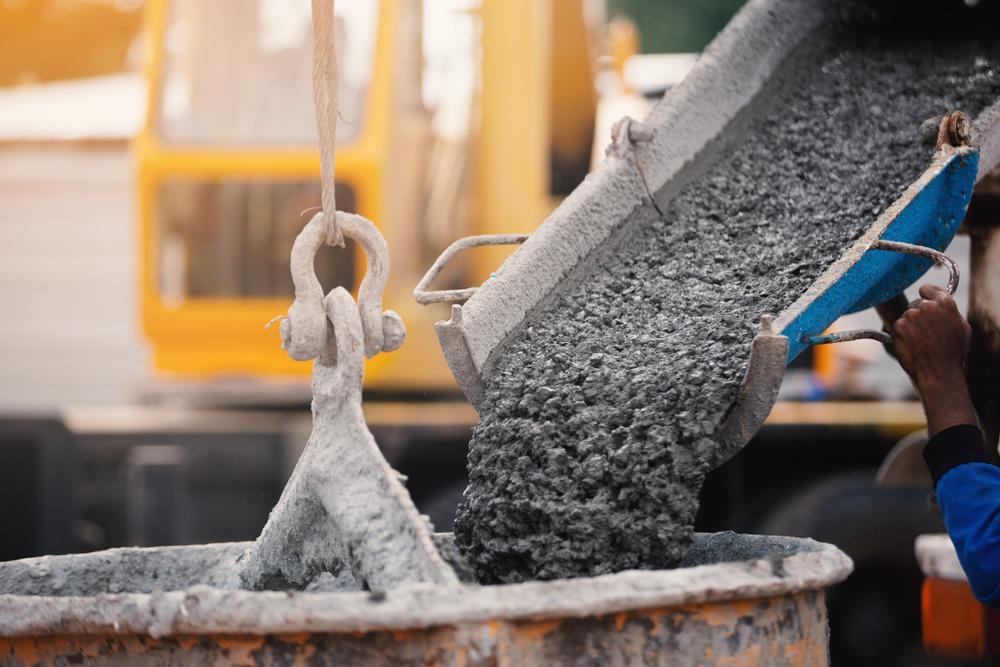The rapid urbanization and the novel worldwide regulatory requirements of civil engineering require more challenging infrastructure. These challenges are driving the development of ultrahigh performance multifunctional nanoengineered construction materials.

Image Credit: P.KASIPAT/Shutterstock.com
Nanotechnology has acquired considerable attention in civil technology. The incorporation of nanomaterials can significantly enhance the structural and mechanical properties of cementitious composites. Researchers have already developed many cementitious composites engineered at nanoscale, such as graphene-reinforced composites.
Concrete in Construction
Concrete, the most widely used building material on the planet, is undergoing considerable research to improve its performance and functionality. It has been used for a long time as a construction material because of its strength, durability, and versatility, making it a durable and long-lasting alternative for various home and commercial applications.
Challenges Associated with Concrete
Despite all these characteristics, the industrial sector confronts significant backlash using concrete because of the need to minimize global carbon dioxide emissions. Furthermore, the strict requirements of strength, robustness, eco-friendliness, deployment in high-stress environments, and fighting moisture infiltration for construction materials demand a more robust variant of concrete with enhanced mechanical properties.
How Can the Characteristics of Concrete be Enhanced?
According to advice from the scientific community, concrete should be engineered at a nanoscale so that its mechanical, chemical, and physical characteristics can be optimized. The addition of additives like graphene can truly enhance its performance.
What is Graphene?
Graphene is an allotrope of carbon that is made up of one-atom-thick sheets. It is almost 200 times stronger than steel and lighter than aluminum, and it conducts electricity better than copper.
Since its discovery, scientists have been working on various applications for graphene, including artificial hair colors, water filters, and night-vision contact lenses and construction.
Why Graphene should be used in Concrete?
Graphene has proved itself as a great concrete additive through research and experimentation conducted by various teams of researchers. The concrete made up of ordinary cement provides excellent compressive strength; however, the poor tensile strength necessitates reinforcement which necessitates a more robust concrete variant.
Graphene-Concrete Composites
Graphene can be added as an additive in concrete to make it more robust, durable, and flexible. This incorporation of graphene can increase the lifespan of buildings by reducing cracks and corrosion.
In the years since this initial discovery, scientists have been working on perfecting the process and making it commercially viable. A team of researchers at the University of Exeter published an article in the journal Advanced Functional Materials that reveals the enhanced properties of graphene-concrete composites.
Researchers incorporated graphene into concrete to develop a composite material that they believe can easily be scaled up for use with modern manufacturing processes. The fragile characteristics of concrete can be addressed in a variety of ways. Graphene concrete enhances compressive strength, flexural strength, and split tensile strength all at the same time.
How Graphene Improves the Characteristics of Concrete?
Ordinary concrete is usually made up of cement, and modifications tend to take place within the cement structure.
The cement particles are made up of multiple elements such as calcium silicates, aluminum, silicon, iron, and alu-minoferrites. The hydration reaction causes the cement particles to transition from powder to fibrous crystals when exposed to water.
The development and bonding of cement particles over time are the most important variables in determining the material qualities of concrete. Nanomaterials’ remarkable chemical and physical properties make them the most effective means of improving the internal matrix of the concrete.
The method used by the researchers is known as the high-shear exfoliation of graphene in water. This method allows the water to be replaced directly in a concrete mixture. The process entails preparing graphene suspensions in water by high-shear exfoliation with the surfactant sodium cholate, resulting in surfactant functionalized graphene (FG).
The surfactant functionalized graphene was then mixed in concrete using a high-shear mixer. The experimental results revealed that the graphene reinforcement not only enhances the compressive strength of concrete but also the flexural strength.
It was observed that the graphene reinforced concrete structures serve as a water barrier which ultimately enhances its durability. It has high resistivity, which prevents the steel rebars from corrosion and high thermal stability, increasing the heat capacity of a material.
It was also found that graphene reinforced concrete structures positively impact the environment since it significantly reduces the emissions of carbon dioxide. All these experimental findings make graphene reinforced concrete a promising construction material for a greener and eco-friendlier construction industry.
What is the future of graphene-concrete composites?
The biggest challenges for real-world applications are the difficulty in finding a reliable graphene supplier and a lack of confidence in graphene in the supply chain.
Extensive research is still needed to fully maximize the potential of graphene composites without endangering the environment or human health. However, graphene reinforced composites will most certainly become a part of cities and homes in the next years, bringing considerable improvements to daily life.
Continue reading: High Thermal Effects on Carbon Nanotube-Reinforced Concrete
References and Further Reading
Dimov, D., Amit, I., Gorrie, O., Barnes, M., Townsend, N., Neves, A., Withers, F., Russo, S. and Craciun, M., (2018) Ultrahigh Performance Nanoengineered Graphene-Concrete Composites for Multifunctional Applications. Advanced Functional Materials, 28(23), p.1705183.https://doi.org/10.1002/adfm.201705183.
Krystek, M., Ciesielski, A. and Samorì, P., (2021) Graphene‐Based Cementitious Composites: Toward Next‐Generation Construction Technologies. Advanced Functional Materials, 31(27), p.2101887. https://doi.org/10.1002/adfm.202101887.
Ravenscroft, T. (2018) Graphene-reinforced concrete is ‘more than twice as strong’ say scientists. [online] Available at: https://www.dezeen.com/2018/05/03/graphene-reinforced-concrete-stronger-university-of-exeter-scientists/.
Rutigliano, S. (2019) Graphene-reinforced Concrete, the Future of Sustainable Cities?, [online] Available at: https://matmatch.com/
Wilson, R. (2018) Adding graphene ‘an absolute game-changer’ for concrete. [online] Available at: https://www.architectsjournal.co.uk/news/adding-graphene-an-absolute-game-changer-for-concrete.
Disclaimer: The views expressed here are those of the author expressed in their private capacity and do not necessarily represent the views of AZoM.com Limited T/A AZoNetwork the owner and operator of this website. This disclaimer forms part of the Terms and conditions of use of this website.